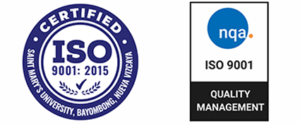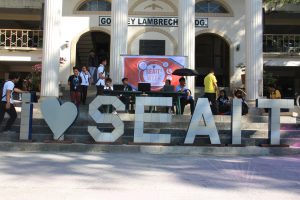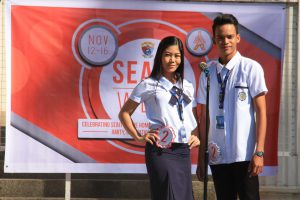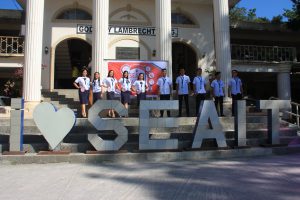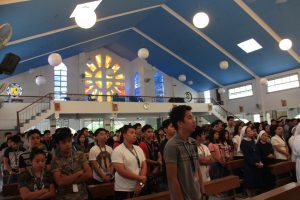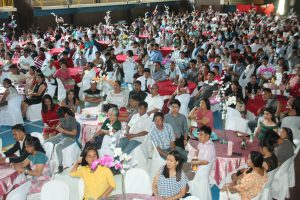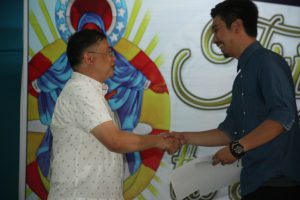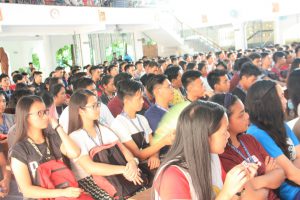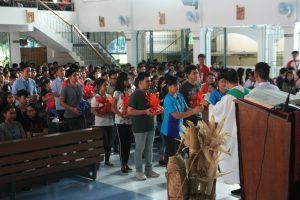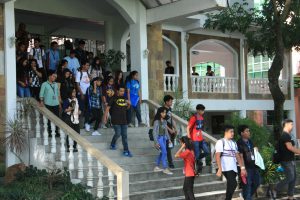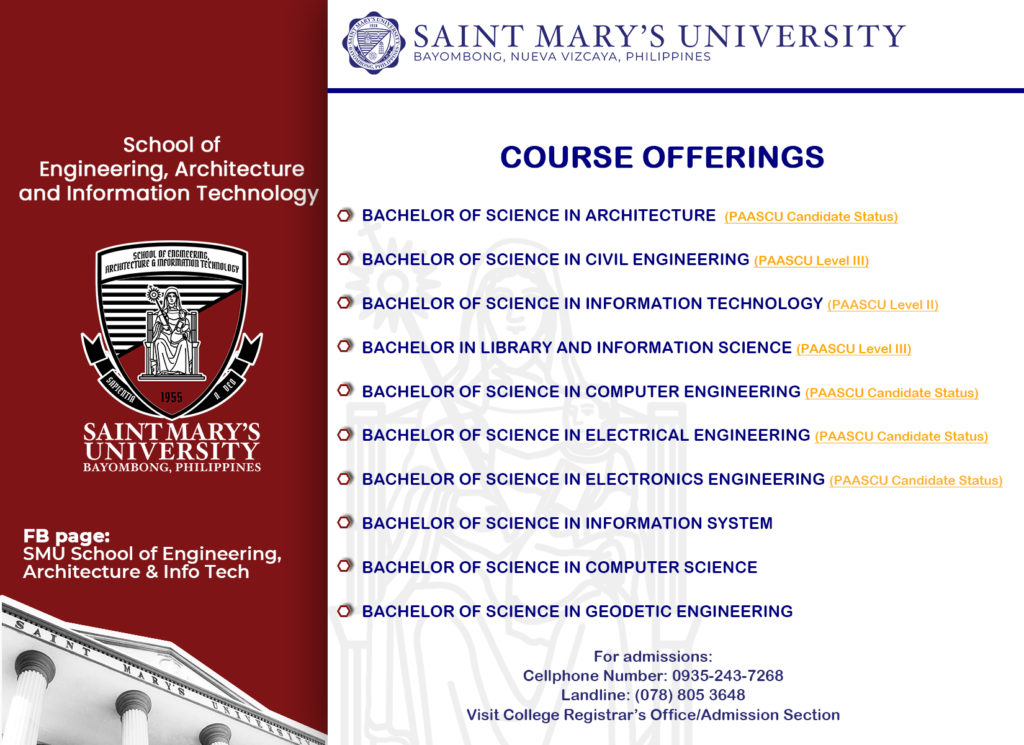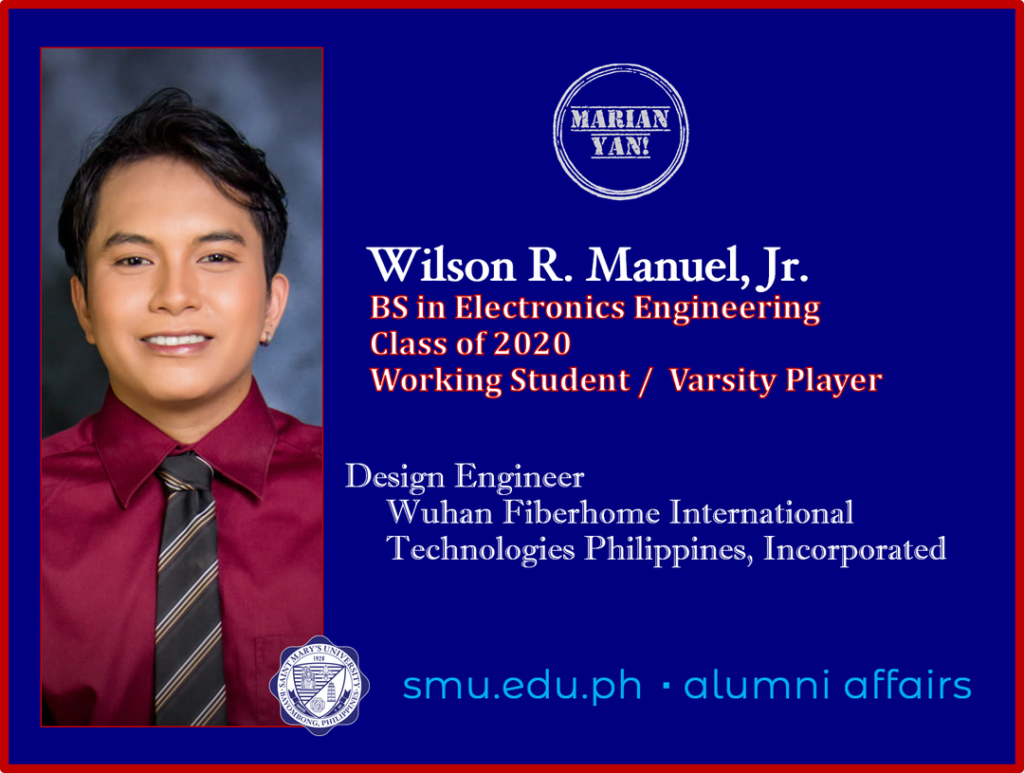
VISION-MISSION
The School of Engineering, Architecture and Information Technology is envisioned as a leading institution in providing education and training for the formation of Engineers and Architects who are globally competitive builders and creators of beauty and efficiency imbued with the values of honesty and integrity. It aims to provide education for Engineers and Architects in harnessing natural resources and in creating utilities and improvements for the sustainable growth and development of man’s institutions, culture and civilization.
HISTORY
The first engineering school in the Cagayan Valley Region, the Engineering Department of Saint Mary’s College (SMC) was established in 1955 by Rev. Paul Zwaenapoel, CICM, then the SMC Dean and pioneer faculty Engr. Ruperto A. Bayabos Sr.
In 1958, the department offered Associate in Surveying Course (ASC). In 1964, the 3-year course in Surveying was opened. In 1973, two 2-year technical courses were opened, namely: Certificate in General Construction Technician (CGCT) and the Certificate in Surveying Aide (CSA). Then in 1977, the 3-year course Associate in Geodetic Engineering (AGE) was offered, evolving to the course Bachelor of Science in Geodetic Engineering (BSGE) in 1990.
Because of its vital role in technological education in the region, Saint Mary’s College was chosen as one of the Ten Supplementary Engineering Schools of the Philippines by the Engineering Education Project of the Education Development Project Implementing Task Force (EDPITAF) in September 1979. This afforded the faculty members to participate in the Masters in Engineering Education (MEE) Program and in professional development geared toward upgrading the faculty and engineering education.
Early in the history of SMC (now Saint Mary’s University) under the administration of Rev. John Van Bauwel, CICM, its developmental moves included the changing of status of the departments to colleges. The Engineering Department became the College of Engineering with Engr. Ruperto A. Bayabos, Sr. as the first dean with the following courses under it: BSCE, AGE, CSA, and BSChem (later placed under the College of Arts and Sciences in 1994). Three departments were formed: Department of Civil Engineering, Department of Geodetic Engineering & Surveying, and Department of Engineering Mathematics. With this changes, came growth and development in several areas like physical plant, equipment, faculty, library, curriculum, and the like.
In June 1995, the Civil Engineering Program of the College was accredited by the Philippine Accrediting Association of Schools, Colleges and Universities (PAASCU) to level 1 and was elevated to Level II in April 2001, re-accredited in 2006 for 5 years until May 2011.Then in May 2012, the Civil Engineering Program was awarded Level III PAASCU Accreditation by the FAAP. It was re-accredited on May 2017 for 5 years until May 2023. The accreditation is a proof that the School of Engineering, Architecture and Information technology is comparable with other engineering schools in the country.
Another breakthrough of the College was its selection in 1999 by the Commission on Higher Education (CHED) as a Center of Development for Civil Engineering (COD-2).
Because of the demand for engineering graduates from other disciplines due to advancement in technology and to help create greater access to other engineering disciplines and allied courses in the province and in the region, four (4) new degree programs were offered under the administration of Rev. Jessie M. Hechanova, CICM. These are as follows: BSEE (Electrical Engineering) and BSCoE (Computer Engineering), which opened in the first semester of SY 1999-2000 and BSECE (Electronics and Communications Engineering) and BS Architecture, which opened in the first semester of SY 2000-2001. The College was then officially renamed College of Engineering and Architecture.
In the second semester of SY 2000-2001, two graduate programs were offered, which changed the status of the College to School of Engineering and Architecture. These are as follows: Master of Science in Management Engineering (MSME) and Master of Engineering (ME) Program: Major in Civil Engineering.
School year 2002-2003 saw the opening of Bachelor of Science in Mechatronics (Robotics). However, this program was phased out in June 2006 because there were no new enrollees. In June 2007, the BSGE Program was shelved because there were no new takers.
During the SY 2006-2007, the School of Engineering and Architecture had six (6) departments, namely: Department of Civil Engineering & Architecture, Department of Geodetic Engineering, Department of Electronics & Communications Engineering & Computer Engineering, Department of Electrical Engineering, Department of Engineering Mathematics and the Graduate Programs.
In July 19, 2006, under the administration of Rev. Fr. Manuel D. Valencia, CICM, entered into a tripartite memorandum of agreement with KCP (Kabayan Center of the Philippines) Holdings and the Technology Education and Development Center Ltd of Hong Kong, China as international linkage partners in the delivery of “home school” (initial) course programs, namely: Bachelor of Science in Civil Engineering (BSCE) via the alternative and continuing delivery schemes.
As the capstone of the delivery process, the curriculum programs of the host- providers and home school- provider (SMU) were mapped and analyzed. For the degree leading to Bachelor of Science in Civil Engineering, parallel subjects were determined and aligned using the following indices: Hong Kong Certificate of Education Examination: Regulations and Syllabuses issued by the Hong Kong Examinations and Assessment Authority, and the curriculum programs of Hong Kong Polytechnic and Hong Kong Construction Industry Training Authority.
The launching of the BSCE curricular program was held at the KCP Holdings, Inc. on December 9, 2007. Since then, faculty evaluators from SMU evaluated in Hong Kong the projects of graduating Chinese students.
The CHED- Technical Panel for Transnational Education came to SMU for an Inspection Visit, last July 22-23, 2010, of the B.S. in Civil Engineering Program to inspect/verify the extent of implementation/compliance of the following criteria which are expected to be followed by any program with international linkage or operating with transnational education: Institutional Management and Commitment, Curriculum Development and Approval, Instructional Materials Development, Delivery Mode/Strategies, Student Assessment, and Student Support Services.
SMU passed the above-mentioned Inspection Visit which indicated that SMU could continue offering BSCE program in Hong Kong.
It is to be noted that SMU-SOEA offers only the 5th Year Subjects of the SMU-BSCE Curricular Program in Hong Kong to Chinese Contractors/Practitioners who have already finished the Ladderized CE Program of Hong Kong equivalent to the subjects in the first four (4) years of SMU-BSCE Curricular Program following the transfer credit mode.
In 2010, SMU was again awarded by CHED as Center of Development in Civil Engineering for a period of three (3) years until 2011. And in 2016, SMU was awarded Center of Development in Civil Engineering up to 2018.
The School of Engineering and Architecture (SOEA) and the School of Computing Science and Information Technology (SCSIT) were merged as one school in 2015. Today, the school is now called the School of Engineering, Architecture and Information Technology (SEAIT).
The Information Technology program was awarded Level I PAASCU Accreditation by the FAAP in November 2014. Currently, the IT Program was accredited as Level II by PAASCU until May 2023.
In 2009, SMU was awarded by CHED as Center of Development in Information Technology for a period of three (3) years until 2011. And it was again awarded by CHED as Center of Development in Information Technology in 2015.
Saint Mary’s University recognizes education as the most potent tool to achieve national development. Science and Technology education was identified as one avenue by which human resource might be developed. It is a hope for SMU to attain or achieve its goal in its bid for advancement and competitiveness in the global arena.
Contact person and details:
Engr. Carina S. Mallillin
OIC Dean
SEAIT, SMU, Bayombong, Nueva Vizcaya
carinamallillin@smu.edu.ph
(078) 321-2221 loc.104
0936-2867280 (Globe)
LIST OF PERSONNEL
ENGR. JEFRIE T. ALINDAYU
ENGR. JOY RIANA L. AGRIMOR
MISS. ROSELYN M. AUSTRIA
AR. CHARMAINE B. BACARRA
MS. ROCEL AUDREY J. BATARA
MRS. SHERYLL D. BARUT
ENGR. KYRA MICHELLE S. BAUTISTA
AR. TOMAS B. BINBINON JR.
MRS. ESSEL T. CANABERAL
ENGR. JESSICA B. CASTILLO
MRS. MILAGROS S. CONSTANTINO
ENGR. LEONIDO A. COSTALES JR.
ENGR. CHRISTOPHER JOHN P. DE VERA
ENGR. SAMUEL D. DELA CRUZ
MR. DAVID A. CABONERO
DR. GERTRUDE G. DANAO
AR. IRONE JAY C. DIOZO
AR. CHRISTOPHER DOMINGUEZ
ENGR. WENSON R. EVANGELISTA
MR. ADONIS V. GARCES
ENGR. MARVIN RYAN C. FERRER
ENGR. ANDRES P. GUALON JR.
AR. FRANZ RINO U. GUMAYAGAY
ENGR. MARIA TONI NIYYA S. LABASAN
MR. FITZGERALD M. LACAMENTO
Lecturers
Dr. Teresita L. Reyes
Dr. Peter M. Ureta
Engr. Reynaldo L. Venturina
MRS. MARJORIE M. LUCQUIAO
ENGR. DAN KENNETH LUTCHINA
ENGR. CARINA S. MALLILLIN
ENGR. JOJO C. MARIANO
ENGR. PAULINA A. MARZAN
AR. GIAN CARLO C. MENDOZA
ENGR. JOEL T. MENDOZA
AR. GENESIS P. MORALES
ENGR. ANGELINO A. PIMENTEL
ENGR. ROJAN I. REYES
DR. TERESITA L. REYES
AR. ROMEO C. ROMERO JR.
ENGR. CANDIDO JOSEPH T. ROSARIO JR.
ENGR. TEOFILO M. SAGABAEN
MR. ROGIE B. TABORDA
ENGR.JUNIFFEN I. TACADENA
ENGR. AURUS JODEO C. TIAM
ENGR. JUN G. VALTORIBIO
ENGR. KENOSIS JOHN WAJCHINA
MR. FRANCISCO B. BAGUILAT JR.
MISS MARY PAULENE JUAN
MRS. ELIZABETH F. RAMOS
MRS. BIVERLY C. TOMAS
BEST FEATURES
1. Awards from CHED
- Center of Development (CoD) by CHED – BSCE Program
- Center of Development (CoD) by CHED – BSIT Program
2. Awards from FAAP/PAASCU
- Level III PAASCU Accredited – BSCE Program
- Level II PAASCU Accredited – BSIT Program

